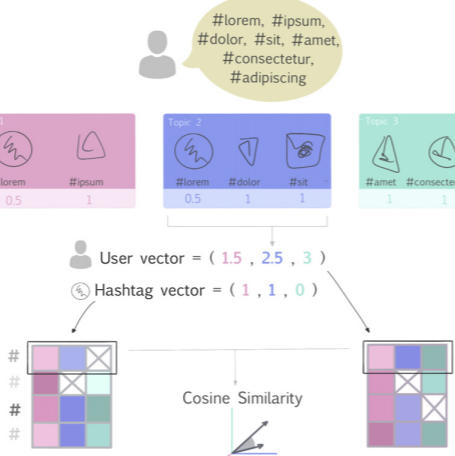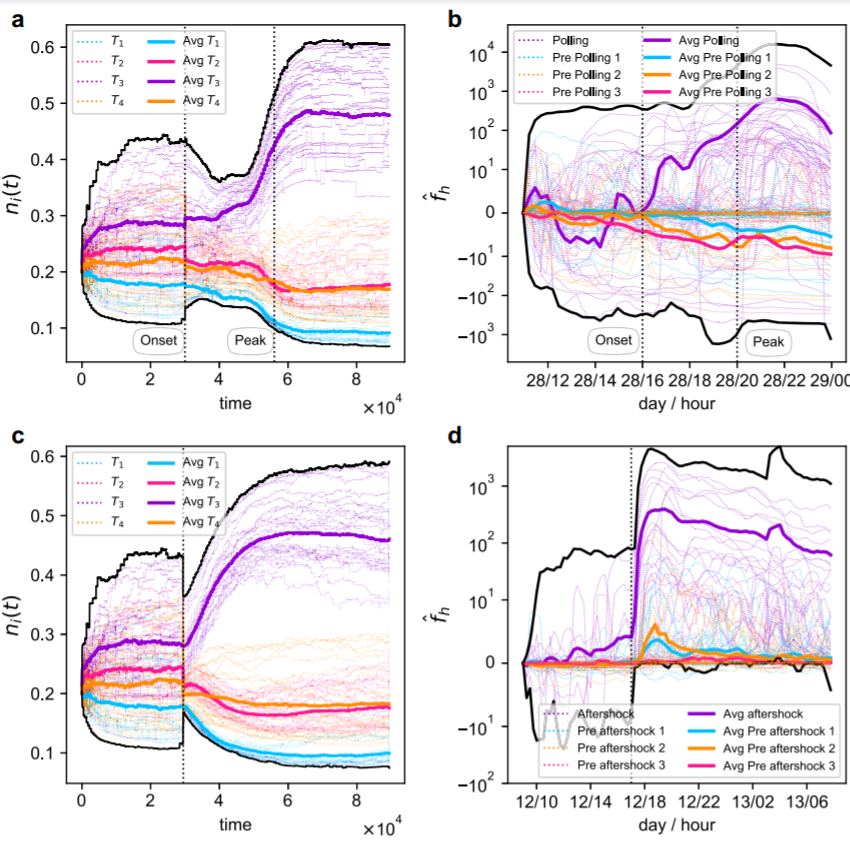TEAMS
Towards an Ecological Approach of Information Ecosystems.
Related Publications
Quantifying the drivers behind collective attention in information ecosystems
An ecological approach to structural flexibility in online communication systems
Neutral theory for competing attention in social networks
Online social networks (OSN) constitute nowadays mainstream communication channels to interact, exchange opinions, and reach consensus. In recent years, it has increasingly become evident that competition significantly shapes the topology and the dynamics on these information-driven platforms: users thrive for visibility, while memes resemble entities that compete for users’ attention. This analogy has fostered many researchers’ struggle to model user behavior on one hand, and so-called semiotic dynamics on the other. However, these represent a partial picture, accounting only for user-user, or meme-meme, interactions. Turning to user-meme (bipartite) networks, non-competitive relationships become apparent as well, under the form of mutualism: the choice of more frequent memes increases the visibility of individuals, which in turn makes the popularity of those memes even larger.
The presence of competitive and mutualistic interactions in OSN is reminiscent of natural ecological systems, where species may interact in many different ways. For example, animal pollinators and plants engage in mutually beneficial connections, but concurrently compete with species in their own class. The introduction of a networked perspective in ecological modelling since the early 2000s represented a major conceptual leap, establishing the link between ecosystem dynamics and species interaction patterns. In particular, the emergence of ubiquitous structural arrangement, nestedness, has been observed in many different ecosystems, which has ignited several research in order to investigate the relation between the species network properties and the system’s stability and biodiversity –notwithstanding other structural arrangements such as modularity or in-block nestedness.
Such qualitative resemblance between natural and information ecosystems indicate that there is ample room to exploit a long tradition in Ecology in this new informational context. While modelling information ecosystems is hardly in its birth –or, specifically, at the descriptive level– a Statistical Mechanics of ecological systems, the conceptual and mathematical framework to relate the macro and micro structural levels has been developed in Ecology in the last decade and can be exploited in this context. Thus, the project seeks the following objectives:
- Structural characterization of information ecosystems.
- Structural patterns in time-evolving information ecosystems.
- Population dynamics in information ecosystems.
Funding Agency
Fondazione Cariparo (Cassa di Risparmio di Padova e Rovigo) (Italy)
Principal Investigator
J. Borge-Holthoefer, S. Suweis
from CoSIN3 webpage



